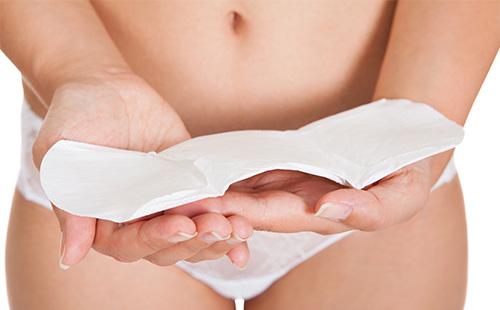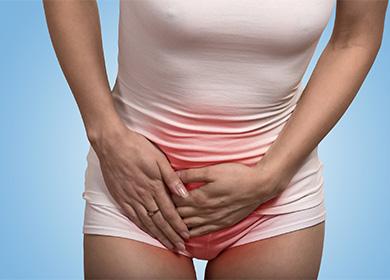The content of the article
Candida colpitis is caused by fungi of the same name. Normally, a small number of them may be present in the vaginal secretion, but under special conditions they multiply uncontrollably, causing symptoms of thrush. Candidiasis can occur on all mucous membranes - the oral cavity, intestines. But thrush in the vagina is often only part of systemic candidiasis.
Main misconceptions
The vagina of a woman should not be sterile. It is constantly inhabited by microbial associations that maintain a healthy balance and a state of comfort. From 95 to 98% of the vaginal flora are normally lactobacilli. The rest are opportunistic microorganisms, the number of which is constantly changing, but does not go beyond the boundaries of health. With a decrease in immunity (for example, during illness, taking antibiotics), conditionally pathogenic microbes begin to multiply actively, causing an imbalance of flora and symptoms of colpitis.
Is colpitis and thrush the same? Candidiasis fungi belong to the group of conditional pathogens; normally they can be present in vaginal secretions in single quantities. With candidiasis colpitis (thrush) at least once in a lifetime, every woman meets. The most popular misconceptions about thrush are as follows.
- Sexually transmitted. Often episodes of exacerbation of candidal colpitis are associated with episodes of sexual activity. However, intimate relationships are just a provocateur of local immunodeficiency, as a result of which the microflora is disturbed and dysbiosis occurs, so you can not get infected. But if there is an explicit clinic for thrush in a woman, white plaque, itching and redness can appear in a man if condoms were not used during sex. Therefore, it is better to be treated by both partners and to avoid intimate relationships during therapy.
- If appeared once, it will always be. Thrush - a sign of impaired metabolism and a marker of immunodeficiency. If the root cause of candidal colpitis is not eliminated, it really will constantly recur.
- For treatment, one tablet is enough. Popular and easy to use schemes that include only a single dose of anti-candida drugs, however, such treatment is only suitable for uncomplicated thrush.
Why arises and who
Often, women themselves provoke the appearance of thrush, but often the causes are chronic, possibly hidden, diseases. If even the first episode of candidal colpitis appears, you should consult a doctor so as not to delay the healing process. Candidiasis in women can occur for the following reasons.
- Features of hygiene. Modern girls tend to be excessively addicted to gels and soaps for intimate hygiene. They literally wash off the protective layer and change the pH, provoking the multiplication of opportunistic flora. The same applies to daily sanitary pads, especially with fragrances, and synthetic underwear. They create airless conditions, reduce tissue aeration, which also leads to dysbiosis.
- Taking medication. Most often, thrush is associated with the use of antibacterial agents. By destroying pathogens in some organ, the drug does not act selectively, but destroys all microorganisms - useful and harmful. The only thing the antibiotic does not act on is fungi, including candida. Therefore, it is logical when prescribing certain drugs to give “cover” with antifungal drugs.
- Overweight. Extra kilos themselves do not lead to thrush. But overweight women are more difficult to maintain hygiene, their sweating is somewhat more intense. Also, completeness is often accompanied by an increase in blood sugar, which provokes candidiasis.
- Lactation and pregnancy. At this time, the woman’s body is in a state of physiological immunodeficiency. A decrease in protective forces leads to a violation of the flora.
- STI Recurrent thrush may be associated with the presence of some kind of sexually transmitted infection, with a mild clinical picture, for example, ureaplasmas, papilloma viruses or herpes. Only after examination and treatment will it be possible to forget about candidiasis.
- Bowel candidiasis. Thrush can be a private manifestation of a common candidal lesion, for example, against the background of HIV, blood diseases. In this case, treatment should be systemic.
- General exhaustion. Stress, worries, conditions after serious illness are also often accompanied by thrush. This is a peculiar signal of the body that it has not yet fully recovered.
- Diabetes.Thrush may be the first manifestation of a tendency to diabetes. So can diabetes mellitus of the first type manifest in teenage girls, as well as the first signs of diabetes mellitus of the second type in adult women. High blood glucose leads to an increase in the concentration of sugar and its metabolites in the intercellular space, which violates the pH.
- Diseases of the rectum. Severe hemorrhoids, anal fissures can also provoke thrush. This is due to the regular random entry of intestinal microflora into the vagina, which causes dysbiosis.
- Helminths. Parasites can enter the genital tract, for example, crawl independently at night or while combing the anus. First of all, this applies to pinworms (a disease called enterobiosis). They are located on the mucosa for some time, upsetting the balance of microflora and causing inflammation.
How does thrush manifest in women
The clinical picture of acute thrush and exacerbation of a chronic form can differ significantly in the severity of all symptoms.
Acute form
The classic version of thrush develops under the influence of short adverse conditions, for example, when taking antibiotics or after an illness. The following symptoms are characteristic.
- Cheesy discharge. This is the most permanent symptom. Discharges with thrush resemble curd grains with a characteristic sour smell, white. When an infection is attached, they can become yellowish or greenish, with an unpleasant odor, blood may appear.
- Itching and burning. Allocations are accompanied by intolerable itching, burning in the vulva and perineum, which are somewhat reduced after taking a shower and if the skin is dry.
- Pain and swelling of the tissues. The external genitalia, as well as the vaginal mucosa, swell somewhat, become bright red - inflamed, it is painful to touch them.
Exacerbation of chronic candidiasis
After the first acute period, small exacerbations with a blurred clinical picture may occur. In such situations, there is a constant factor that provokes inflammation, for example, elevated glucose levels.Periods of exacerbation often occur in the second phase of the cycle, this is due to a change in the hormonal background and a physiological decrease in immunity at this time.
The main signs of thrush in women are usually limited in this case to the following.
- Itching He is always there, brings discomfort, the reviews of women confirm this. Itches inside the vagina, external genitalia, perineum. This may be the only symptom of exacerbation.
- Whitish discharge. Usually they are few, they are creamy with a small amount of "curd" grains.
How to identify and confirm
Acute thrush is not in doubt even during a routine examination. Chronic sluggish less often has obvious signs. Candidiasis colpitis can be confirmed by the following methods.
- Smear from the vagina. A standard study of the vaginal flora without difficulty will reveal a thrush. In this case, candida fungi are detected. If the smear has elevated white blood cells, this is a sign of active inflammation.
- Sowing from the vagina. A bacteriological study allows you to identify even single colonies of candida, this study is relevant in the case of chronic recurrent thrush.
- PCR of the vaginal flora. Using PCR, not only fungi can be detected, but also other STI pathogens. This is the value of this diagnostic method.
What is dangerous
Candidiasis colpitis does not pose a particular danger to a woman, in addition to unpleasant sensations, a decrease in working capacity and the quality of intimate relationships during periods of exacerbation. But thrush must be perceived as a marker for the presence of other diseases. For example, a full examination with recurrent candidal colpitis helps to detect diabetes and genital infections. Permanent thrush during pregnancy can have the following consequences:
- premature discharge of water;
- inflammation of the cervical canal and infection of the child;
- increases the likelihood of vaginal breaks in childbirth.
Therapy
Treatment of thrush, especially of a chronic form, should be comprehensive. The main thing is to identify the true cause and eliminate it. For example, adjust blood sugar or radically get rid of parasites (pinworms), hemorrhoids. In addition, additional treatment with anti-candida drugs is necessary, the review of which is performed in the table.
Table - Tablets for the treatment of thrush
| Medicine | Full analogues | Application features |
|---|---|---|
| Fluconazole | - "Diflucan"; - Mikomax; - "Flucostat"; - "Diflason" | - 150 mg once in the acute period; - then monthly in the second phase for six months, 150 mg orally |
| Ketoconazole | - Not | - 200 mg for 3 days |
| Pimafucin | - Not | - 100 mg once a day for 3 days |
| Nystatin | - Not | - 1 tablet 4 times a day for 3-5 days |
| Itraconazole | - “Irunin”; - Itrazol | - 1 capsule 2 times a day for 3-5 days |
Medicines such as suppositories or vaginal tablets against vaginal candidiasis almost always have the same pattern of use - one at night in the vagina. Only the duration of treatment differs by them (from a single application to a course of 10-14 days). Examples of drugs:
- «Livarol"(With ketoconazole);
- Primafungin (with natamycin);
- «Pimafucin»;
- Ginezol (with miconazole);
- «Polygynax" or "Terzhinan"(With nystatin);
- Ginofort (with butoconazole).
Many of the anti-candida drugs come in the form of creams.They can be used by men for prevention, as well as women to lubricate the external genital organs.

Additional treatment
In addition to the main therapy, it is often necessary to prescribe the following groups of drugs:
- to normalize immunity - candles "Interferon", "Ruferon";
- to restore microflora - candles in the vagina, solutions or powders with lactobacilli, for example, Bifidumbacterin, Linex.
Prevention
You can prevent the appearance of thrush by observing the following rules:
- use linen made from natural fabrics;
- limit the use of daily pads;
- minimize the use of intimate gels, soaps;
- use condoms for protection;
- when taking antibiotics, take anti-candidiasis drugs;
- compensate for chronic diseases, especially diabetes.
Thrush is a reflection of a woman’s immunity, manifested by cheesy discharge from the vagina, itching, burning, fever and severe pain.
Thrush is not a sexual infection and is not transmitted through sexual contact, but you should not have an intimate relationship during an exacerbation. Prevention of the disease consists in observing personal hygiene, sexual literacy and respect for one's health. Treatment of thrush in women should be comprehensive and based on the cause, and not be aimed only at relieving the symptoms of the disease.

